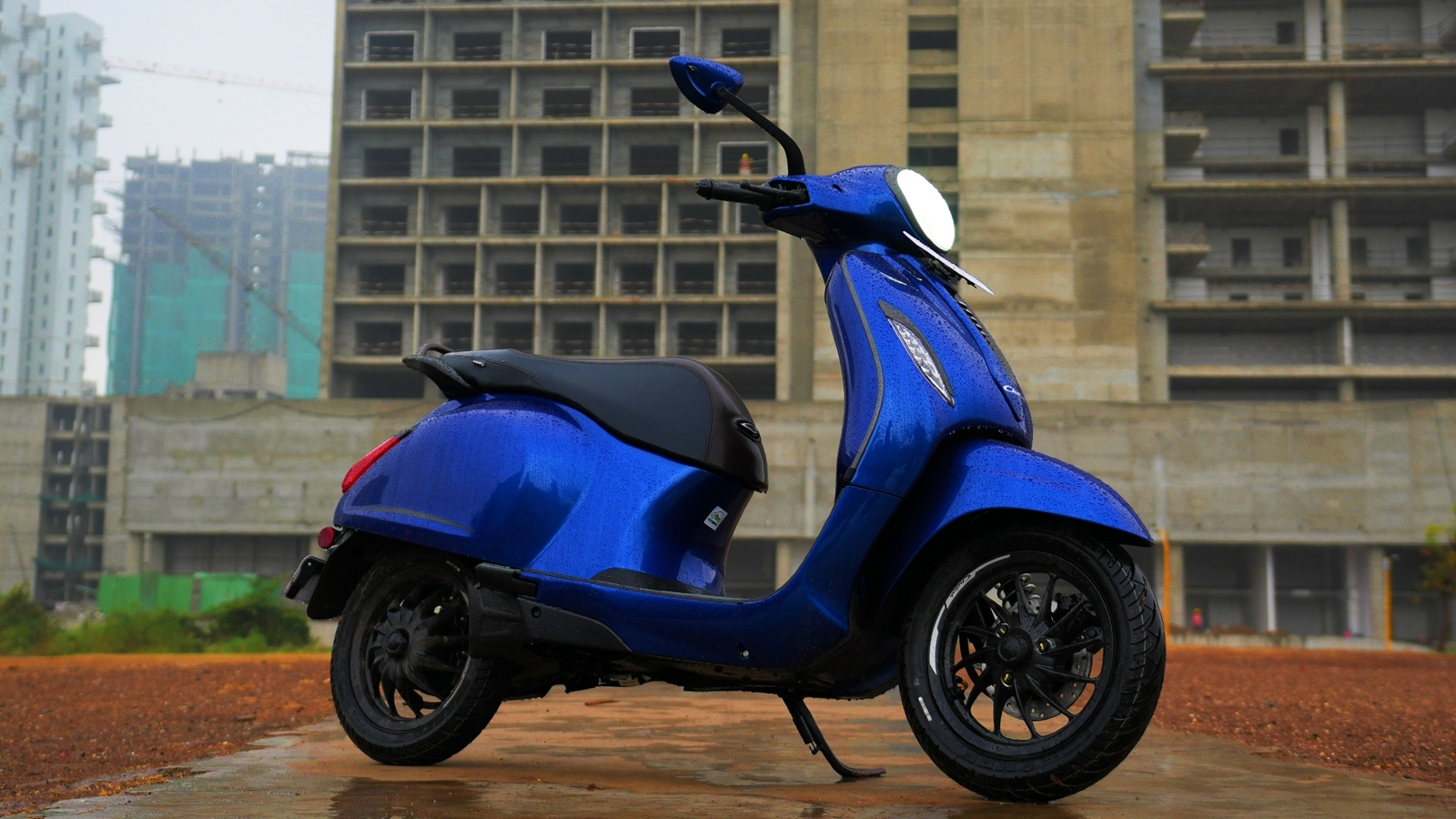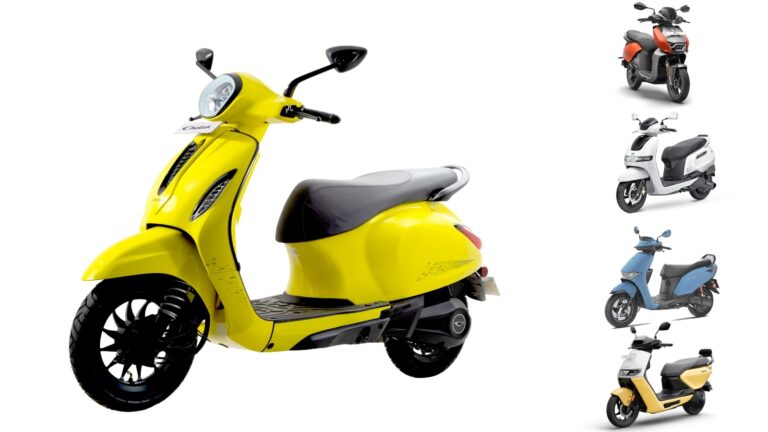The Bajaj Chetak 3001 has been recently introduced as a lower-cost version of the popular electric scooter. Starting at ₹99,990, ex-showroom, the model becomes the new starting point in the Chetak range and will find favor with budget-conscious urban buyers.

With its launch, Bajaj is taking on better-established brands like TVS, Ather, Vida, Honda and soon-to-be-launched Japanese player the Suzuki e-Access in an extremely competitive segment. Here’s a comparison of how the Chetak 3001 stacks up against competition in terms of battery capacity, range, charging time, features, and price.
Bajaj Chetak 3001 vs rivals: Battery pack and range
The Bajaj Chetak 3001 is equipped with a 3kWh battery pack, placing it between the base 2.2kWh model of the TVS iQube and the bigger 3.5kWh models. It has a claimed IDC range of 127 km, just behind the Ather Rizta S’s 123km-claimed range for its 2.9 kWh battery pack and ahead of the Vida V2 Plus with 143km and TVS iQube 3.5 with 145 km claimed range.
Against the next Suzuki e-Access, which boasts a 3kWh battery but provides just 95km of range using lower energy-density LFP cells, the Chetak comes out better. The Honda QC1, with its minuscule 1.5kWh battery and 80km claimed range, languishes far behind, although at a lower cost.
Bajaj Chetak 3001 vs rivals: Charging time
The Chetak 3001 was equipped with a 750W charger, which allows it to charge from 0–80 per cent in 3 hours and 50 minutes. It may not be fast-charge capable, but its charge time is faster than most of the entry-level options. For example, the Ather Rizta S, which is positioned higher, takes 6 hours and 30 minutes to hit 80 per cent charge with its standard charger. However, both the Ather and Vida models use the Ather Grid to make fast-charge compatible, which is fantastic for quick top-ups when commuting is urgent.
The TVS iQube 2.2kWh has the fastest standard charge time at 2 hours and 45 minutes. Its 3.5kWh sibling and the Suzuki e-Access need approximately 4 hours and 30 minutes, but Suzuki is claiming just 1 hour and 12 minutes charging on its fast charger, which could give it an advantage down the road.
Bajaj Chetak 3001 vs rivals: Price
At ₹99,990, the Bajaj Chetak 3001 is fairly priced, undercutting some rivals and offering better value than others. Though the Vida V2 Plus leads with a highly discounted ₹85,300 price point, this is probably valid only for a short while. The Honda QC1, at ₹90,000, is reasonably priced but lacks in range and battery size.
On the pricier side, the TVS iQube 3.5 is priced at ₹1.31 lakh, and the Ather Rizta S at ₹1.10 lakh—apart from another ₹14,000 for Ather’s Pro Pack, which activates core features. The TVS iQube 2.2 is priced at ₹1 lakh, positioning it almost on the same price point as the Chetak.


















